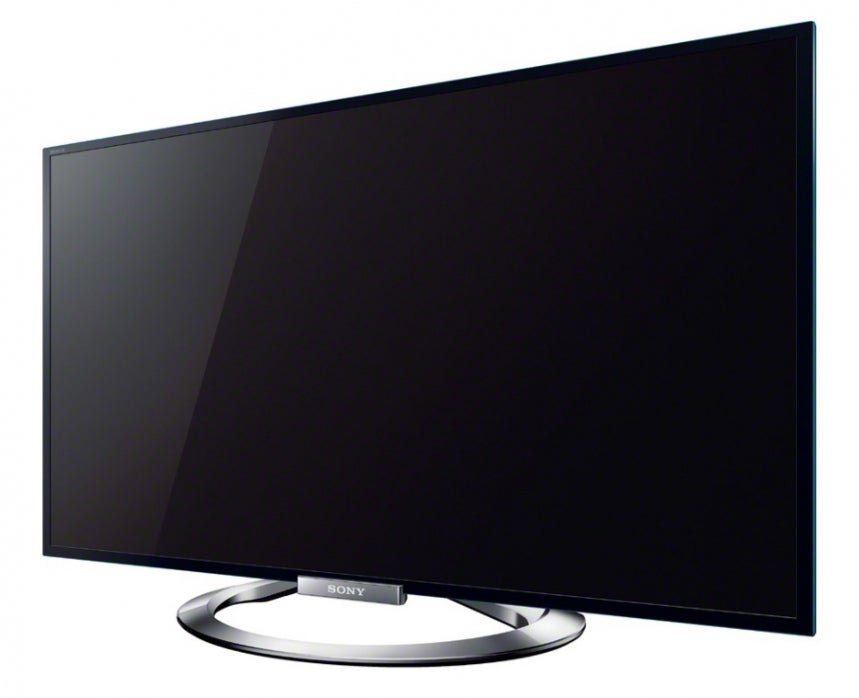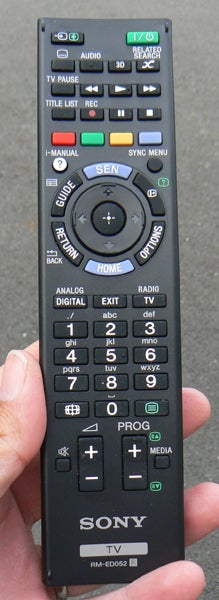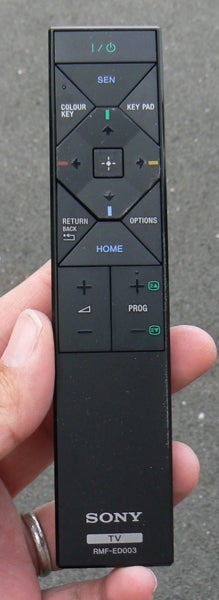Sony Bravia KDL-40W905A Review - Setup and Picture Quality Review
Setup and Picture Quality
The best 40-inch TV in town? Could be...

Sections
- Page 1 Sony Bravia KDL-40W905A Review
- Page 2 Setup and Picture Quality Review
- Page 3 3D, Sound and Verdict Review
Sony 40W905A: Set Up
 Setting the Sony 40W905A up is a bit confusing,
Setting the Sony 40W905A up is a bit confusing,
at least initially. While Sony’s set lacks a colour management system of
the sort found on most high-end TVs, it’s got far more processing
options than most rivals. In fact, there are more processing options
than might actually be helpful – especially as some of them seem to do
more harm than good.
This can make the 40W905A a little tricky to
get the finest performance out of, but so long as you start from the
position of treating all of the processing tools with a healthy sense of
caution (setting them either off or at their lowest level of operating
‘power’ as a default starting point), you should be OK.
Sony 40W905A: Picture Quality
The stars of the 40W905A’s processing show are its motion handling and its upscaling. With the former the processing is able to remove excessive judder and pretty much all resolution loss over moving objects without causing too many unwanted side effects or leaving the image looking unnatural. With the latter the ability of the upscaling processing to reduce noise without causing softness when converting even the lowest quality standard def – or, shudder, internet video – sources to the screen’s full HD resolution is outstanding.
It’s worth adding too, now that we seemed to have stumbled into actually testing the 40W905A, that its upscaling is unusually good when it comes to retaining the picture’s colour palette, not suffering the drop off in richness and finesse witnessed when watching standard definition on some lesser LCD TVs.
As with any modern high-end TV, though, the Sony 40W905A deserves to be fed a diet of HD as often as humanly possible. And with this level of content – as with the previously tested Sony 55W905A – the 40W905A is a joy to behold.
There are two stars to the set’s HD show. First and most importantly, its contrast range is immense. As with last year’s Sony HX853 models, the Sony 40W905A uses local dimming with its edge LED light array unprecedentedly effectively, serving up what are for our money the richest, deepest black colours during dark scenes currently available on a 40-inch LCD TV.
This instantly gives films a cinematic authenticity, consistency and immersiveness that movie fans will adore. Even better, the excellence of the local dimming engine means the screen’s intensely deep black colours are achieved without the light areas of predominantly dark pictures having their brightness compressed.
You can also make out plenty of shadow detail in dark areas, avoiding the hollow, flat look quite often seen with edge LED TVs during dark scenes, and perhaps most startlingly of all, the local dimming is somehow able to do its work while causing practically no haloes or ‘light blocks’ around bright parts of the image. There are no backlight clouds in the image’s corners either, ensuring that even the most contrast-rich shots look pure and natural.
 The other key strength of the Sony 40W905A is its colour response. We can’t think of another 40-inch TV around right now that can match the sheer flexibility of the 40W905A’s colour palette, as the Triluminos technology allows you to enjoy either ultra-vivid or extremely natural colour tones, depending on what sort of look you prefer. And whatever approach you go for the colour range on show exhibits a huge amount of subtlety when it comes to blends and tonal shifts.
The other key strength of the Sony 40W905A is its colour response. We can’t think of another 40-inch TV around right now that can match the sheer flexibility of the 40W905A’s colour palette, as the Triluminos technology allows you to enjoy either ultra-vivid or extremely natural colour tones, depending on what sort of look you prefer. And whatever approach you go for the colour range on show exhibits a huge amount of subtlety when it comes to blends and tonal shifts.
Even when you’ve got the picture calibrated to deliver the closest colour match to the industry REC.709 video standard, interestingly the Triluminos system seems to deliver a slightly purer look to the palette than rival TVs.
The Sony 40W905A also delivers exemplary sharpness with HD sources, and it does so, moreover, without the picture looking stressy or full of dot crawl noise. The sharpness remains during action scenes too, thanks to Sony’s impressive motion processing engine. Some of the many settings for this are more successful than others, and one or two are just plain weird. But the TrueCinema and Clear settings both work effectively without causing too many unwanted side effects or making the picture look too unnaturally fluid.
There are only two flaws with the 40W905A’s pictures. First, its useful
viewing angle is very limited. You really don’t have to be watching from
much of an angle at all before pictures – or at least the sides of
pictures – start to lose contrast and colour, and the image even takes
on a curious purple tinge if you watch from a quite steep angle.
We
noticed these viewing angles issues on the 55W905A too, though it seems
slightly more pronounced on the Sony 40W905A on account of this TV’s smaller
screen size. Also slightly more noticeable on the 40W905A is the
reflective nature of its screen, since if you do see anything bright in
your room reflected on the 40-inch TV, it takes up more of the relative
screen real estate than it would on the 55-inch version.
How we test televisions
We test every TV we review thoroughly over an extended period of time. We use industry standard tests to compare features properly. We’ll always tell you what we find. We never, ever, accept money to review a product.

